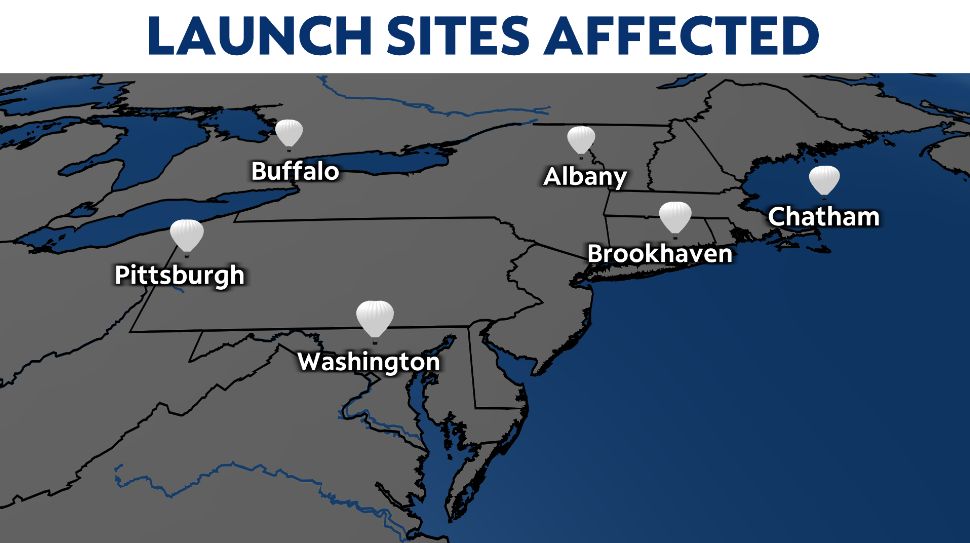A helium and hydrogen shortage is causing some National Weather Service (NWS) offices to launch one weather balloon per day instead of two.
There are 101 sites across the U.S. and Caribbean that launch weather balloons twice a day. Sometimes, during high-impact weather, the NWS launches additional balloons to collect more data.
Radiosondes attached to weather balloons collect temperature, pressure, wind and moisture data.
Of the 101 sites that launch balloons, nine sites are now only launching once per day outside of a severe weather situation. Six of those sites are in the Northeast.

Albany, Buffalo and Pittsburgh are only launching one balloon a day outside of severe weather because of the helium shortage. Cutbacks at Washington D.C. and Brookhaven, N.Y. have limited these sites to one launch per day.
The NWS took the Chatham, Mass. site offline last March and has yet to be replaced.
The combination of these three issues has made for quite the data gap across the Northeast.
The two largest producers of helium are the U.S. and Russia, and the conflict in Ukraine is creating a greater demand for U.S. helium. While the hydrogen contract issue has been recently resolved, it may take several weeks for gas to arrive.
The NWS ingests data collected from balloon launches into computer models that meteorologists use to forecast the weather daily.
While data from weather satellites are much more crucial to computer models, data collected from weather balloons is also important.
The NWS has said that the limited balloon launches won't affect weather forecasts, but meteorologists across the Northeast say that's up for debate.
It's unclear how long the helium shortage will last, but the NWS says it's planning on finding ways to cut back on its reliance on helium because of this latest shortage.



